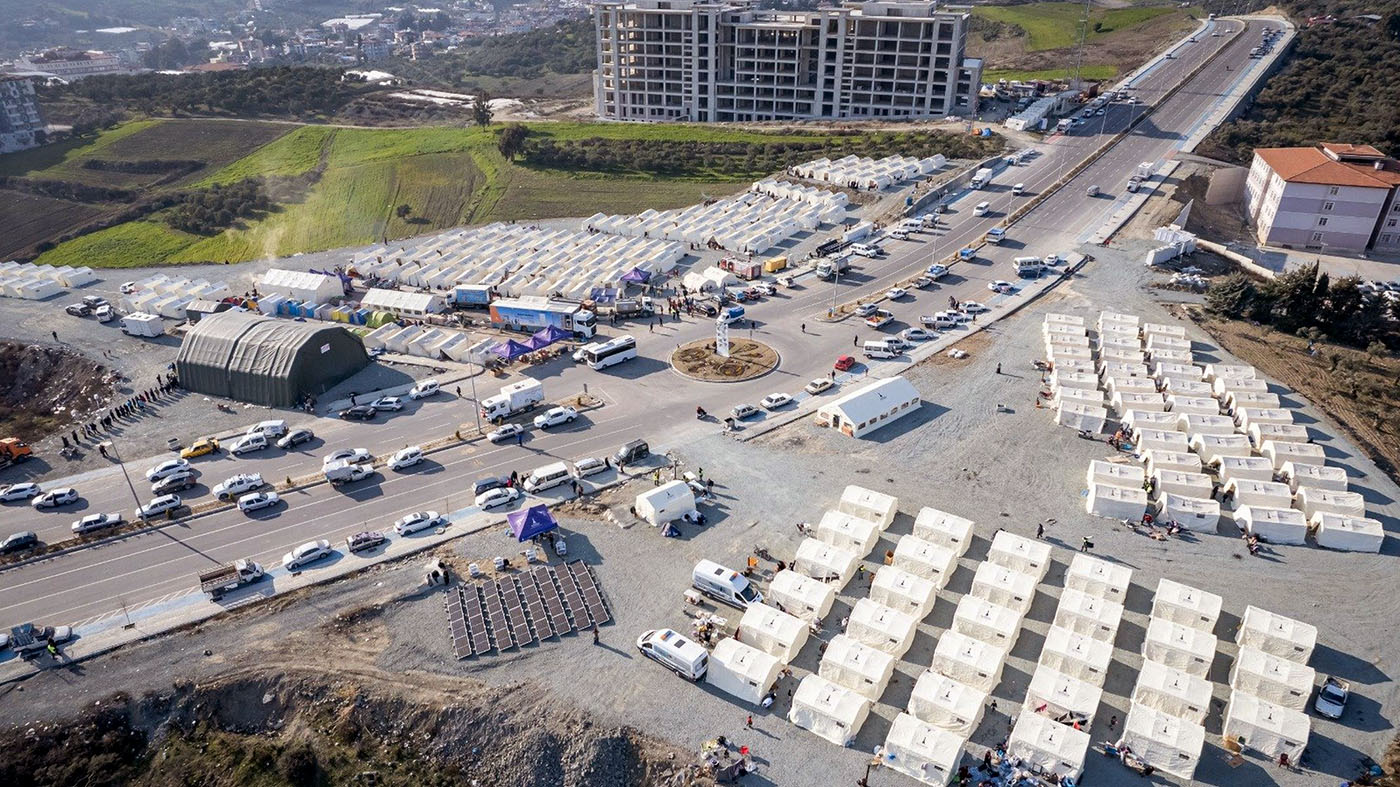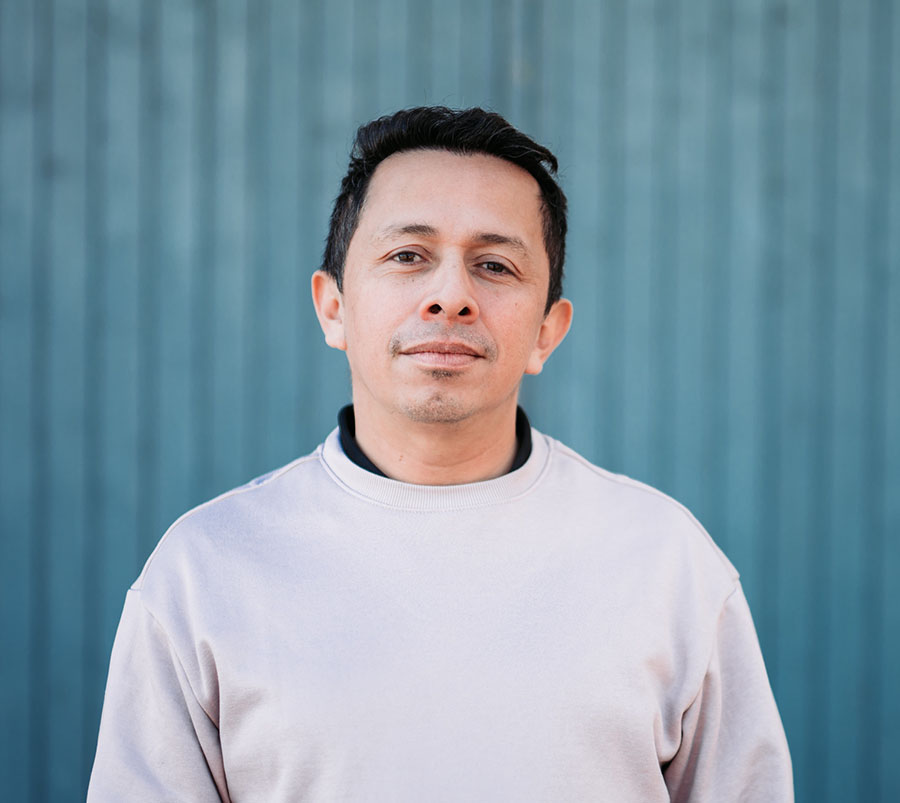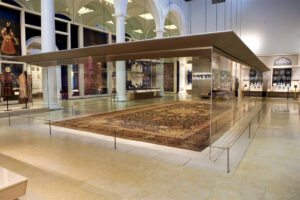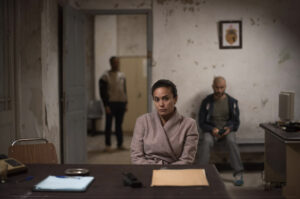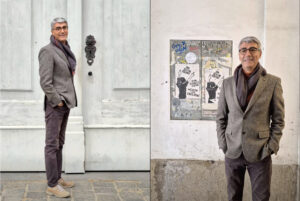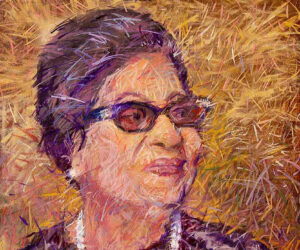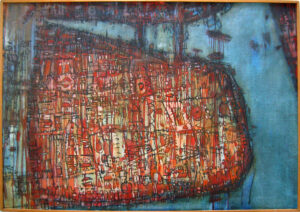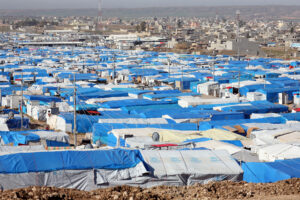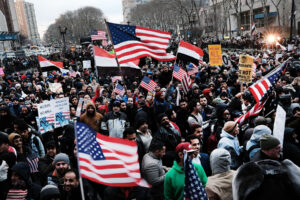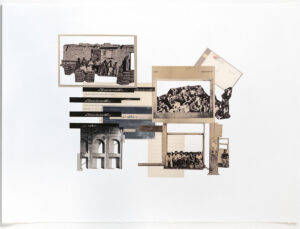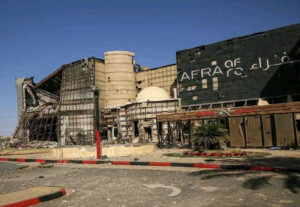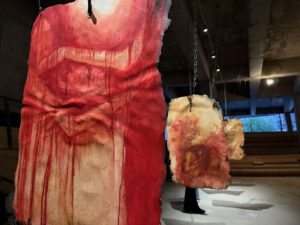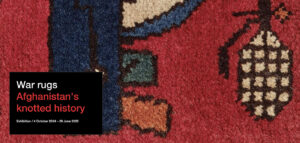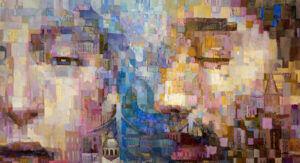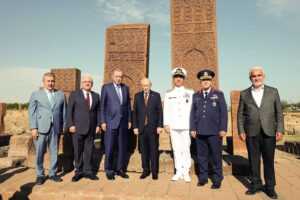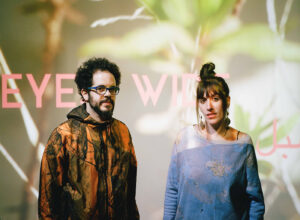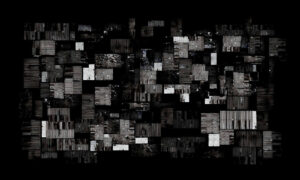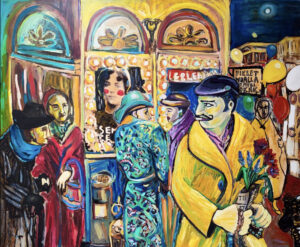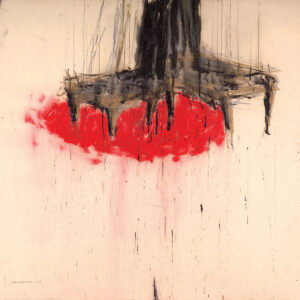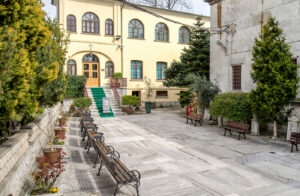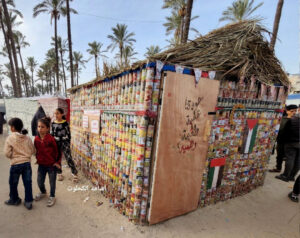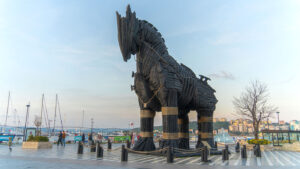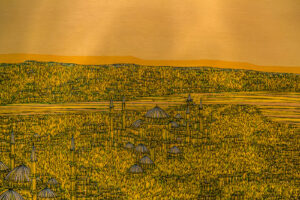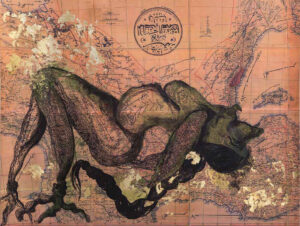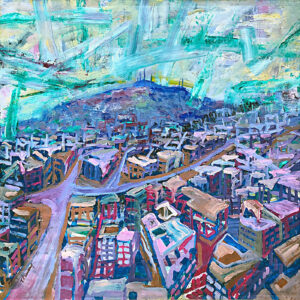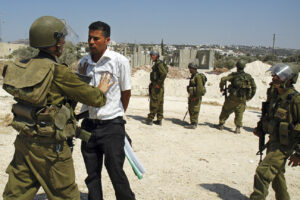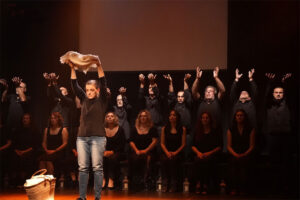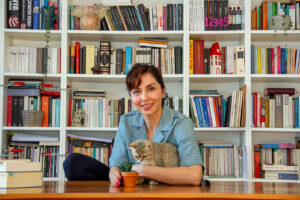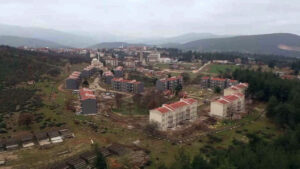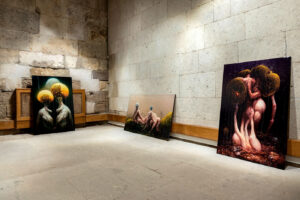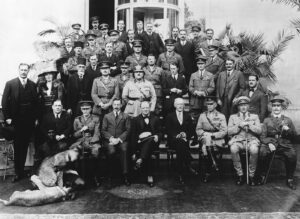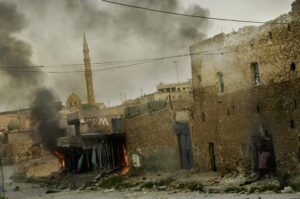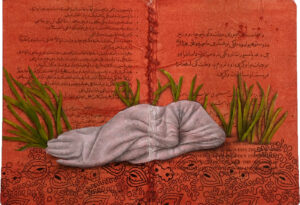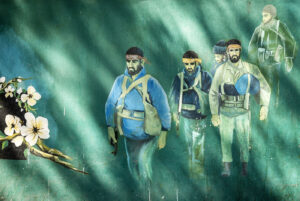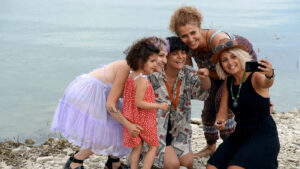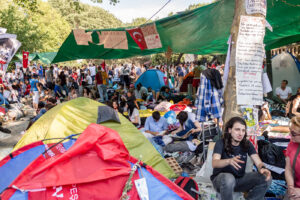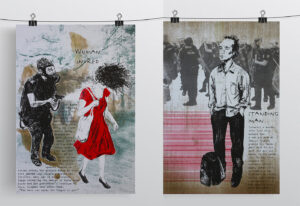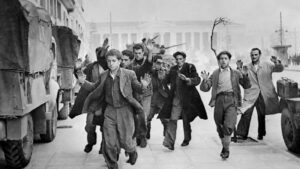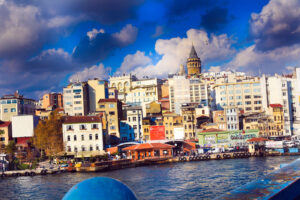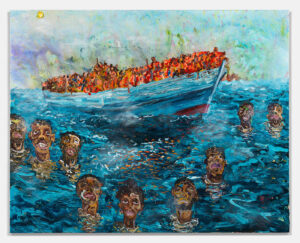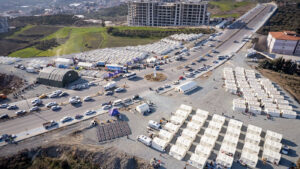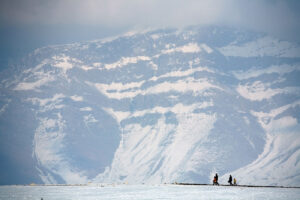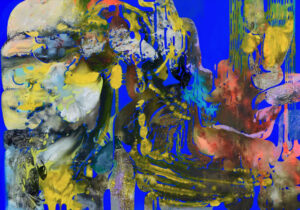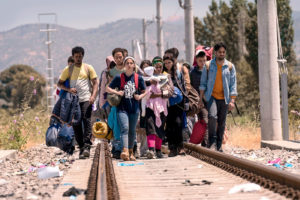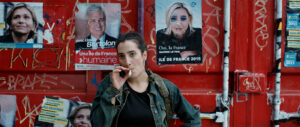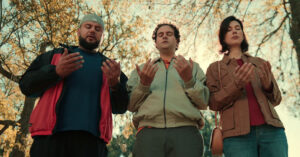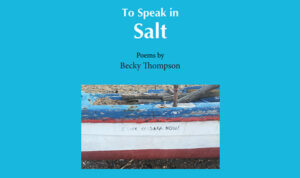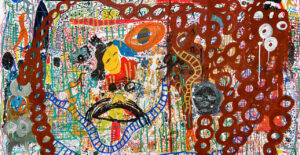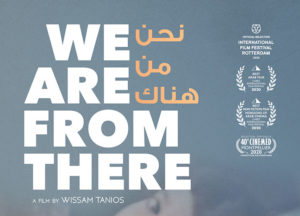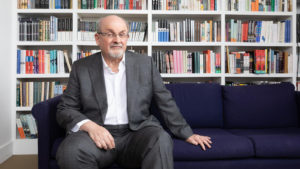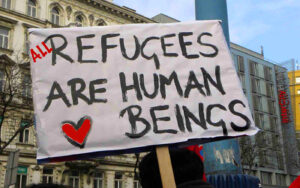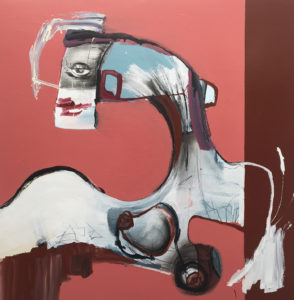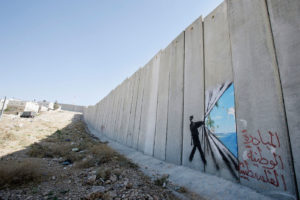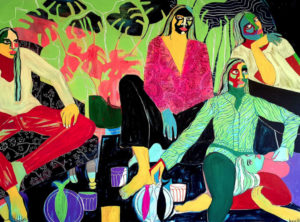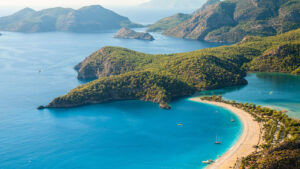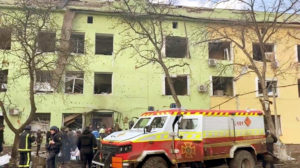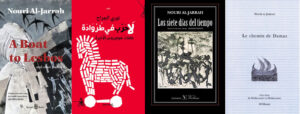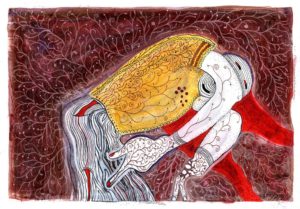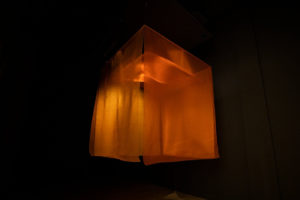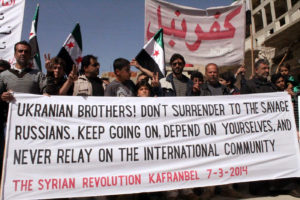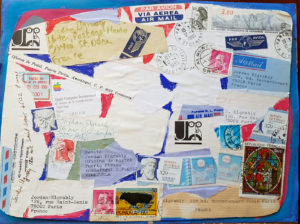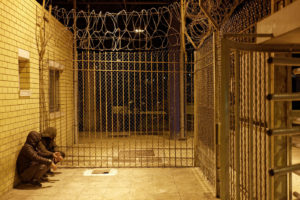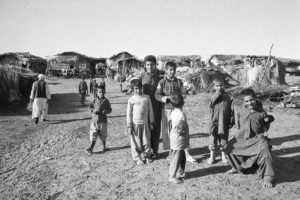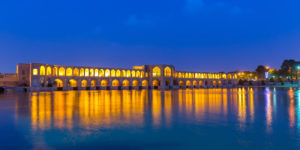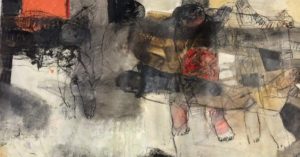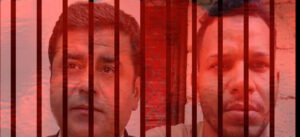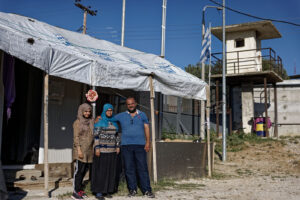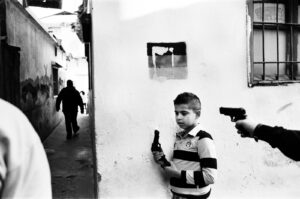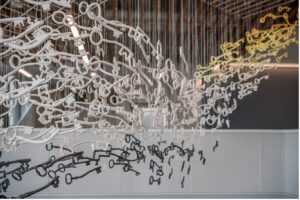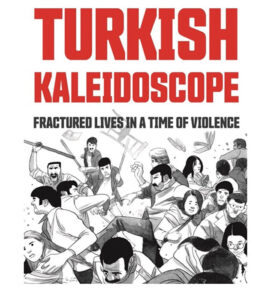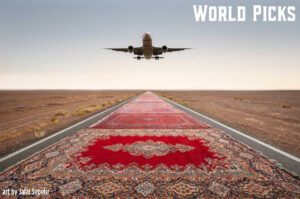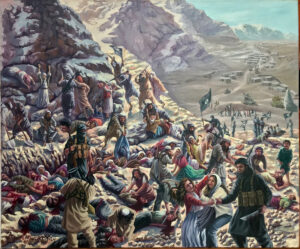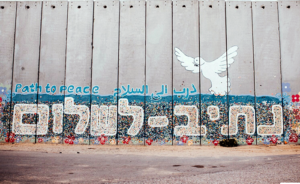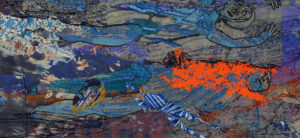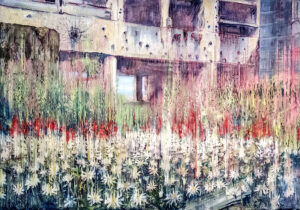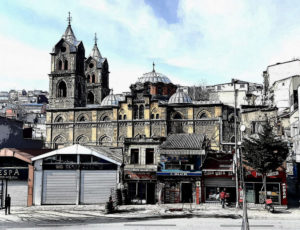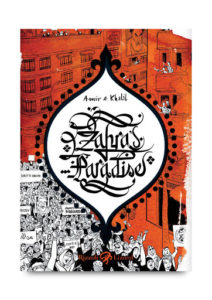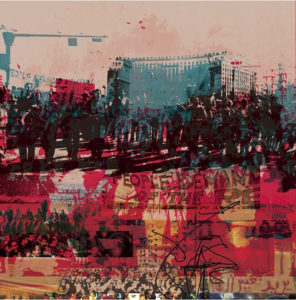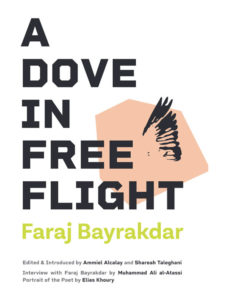The tents of refuge are not just a prophetic metaphor, but a political reality for millions of people.
Arie Amaya-Akkermans
The first Biblical reference to tents appears early in the narrative of the Book of Genesis, concerning a man known as Jabal, of whom it was said that he was the father of those who dwell in tents (Gen 4:20). But life in tents is held in high regard throughout scripture and tent-dwelling symbolizes the condition of God’s people; they were wanderers, awaiting the time when a permanent city will be established — a heavenly home. The patriarchs Abraham, Isaac and Jacob lived in tents most of their lives, and the Children of Israel lived in tents during forty years in the wilderness. For several years, after entering the Promised Land, the people of Israel still lived in tents, and they even had a tabernacle that functioned like a portable temple, as they wandered in the wilderness.
But there’s no such thing as lands promised, unless they’re taken violently. The tents that now adorn the modern Levant have little to do with Biblical prophets as they were described in the past in monographs about Bedouin culture in Palestine and the Transjordan; these tent cities have been manufactured by displacement. It’s not just the plight of Palestinians, displaced from their own ancestral home, languishing since many years in refugee camps in Jordan, Syria and Lebanon, as well as living in abject poverty on the tiny archipelago that is now the Palestinian territories under Israeli control, but also the countless refugees created by other conflicts since then: political violence in Turkey since 1976 and the Kurdish struggle, the Gulf War, the invasion of Iraq, the Hezbollah-Israel War in Lebanon in 2006, the ongoing civil war in Syria since 2011, the insurgency of the Islamic state in Iraq since 2017, and so on.
The promise of a heavenly home in exchange for tents on earth appears as early as Saint Augustine, in the Tractates on the Gospel of John, going back to the 5th century, where he preaches that “This world is for the faithful, who do not love the world, what the desert was for the people of Israel” and that “At the present time, then, before we come to the land of promise, namely thy eternal kingdom, we are in the desert and live in tents.” Studying this passage, in the years following World War I, Hannah Arendt remarks: “Would it not be better to love the world and be at home? Why should we make a desert out of this world?” Her response is a reminder that the tents of refuge are not just a prophetic metaphor, but a political reality for millions of people.
A dozen cities lie completely destroyed and it will be necessary to rebuild entire provinces from scratch.
In the early morning of February 6, 2023, two devastating earthquakes literally shook the earth in Turkey and Syria, encompassing an area so vast as to comprise everything between Diyarbakir and Hatay, Adana and Idlib. The seismic movements caused devastation so massive that even a month later, it hasn’t been possible to establish the true extent of the disaster, or to tally up the number of dead. Official statistics are misleading, considering how many remain unaccounted for, and international organizations in the field are working with numbers so large that they fail to make sense in the human imagination. The facts are sobering: A dozen cities lie completely destroyed and it will be necessary to rebuild entire provinces from scratch.
As the first earthquake hit, people fled the safety of their homes — those who could — and have not been able to return. It’s uncertain that they ever will. Not only entire neighborhoods were wiped out by the natural disaster, but many more will have to be demolished and rebuilt. The first hours in the aftermath were enveloped by total chaos, and the details are blurry. But we know that many people congregated in public squares and used their cars as mobile homes, and tried to set up tents for themselves in the vicinity of their houses. With each passing day, the hope for normalcy began to evaporate, and tent cities began to appear all over the region. At the site of Expo Hatay, on the outskirts of Antakya, a venue for trade fairs and events, now international organizations have clustered up, surrounded by the iconic white tents of refugee camps all over the world.
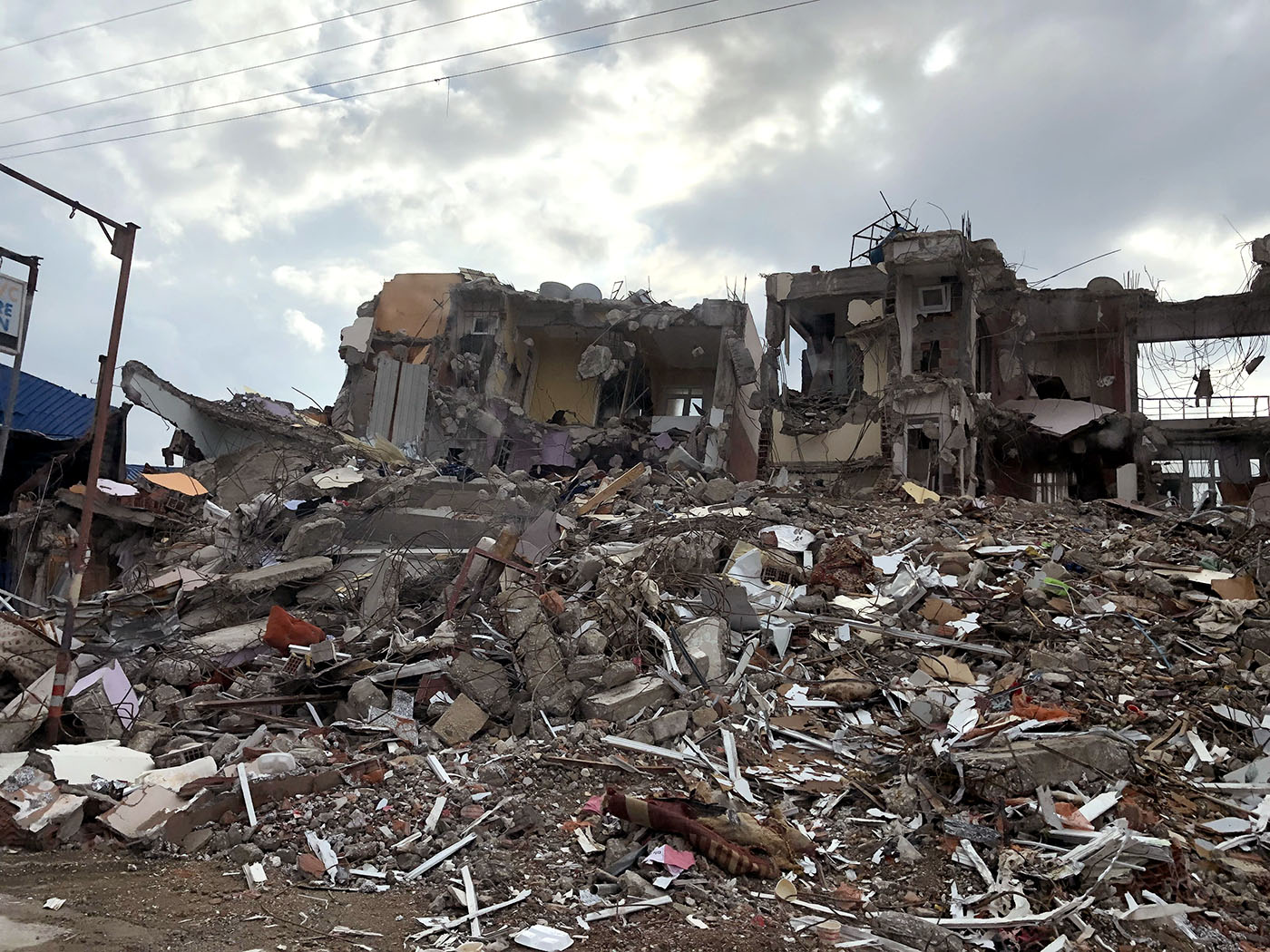
But the tents have also been mired in stories of corruption and mismanagement. Not only have they been difficult to obtain, at the height of winter, but also in many cases, they have been seized by the authorities trying to completely monopolize aid efforts, tents were also sold by aid organizations to one another, and prices are soaring. In most cases, they have to be secured privately. In order to not lose these difficult to acquire tents to corruption, people in the know who want to help their family or friends, have to identify a recipient in advance and send the tents as a cargo purchase to be delivered door to door, even though the addresses might no longer exist. Life in these tent cities is more than precarious; without running water, an official connection to the electricity grid, or any standards of safety, the tents are also another tragedy in the making, as people are using gas stoves for heating and cooking. What could go wrong? As of this writing, there’s a grave shortage of drinking water in the provinces of Hatay and Adiyaman.
In the past week a new development: Police approached people who had installed their tents in a carpark in Defne, a district of Hatay, with a warning to evacuate the area and move to tent cities built by the state. People complained bitterly, for they’re receiving food and aid in their tents near their places of residence, provided by international organizations or other municipalities — to the central government’s chagrin, and in a harrowing video from Defne circulating online, a woman can be heard in the background asking a policeman, where were you when we were under the rubble?
A similar warning from the authorities was issued for Samandağ, where people in the city center have installed tents around Yeni Park, with the aggravation that the tent city built by the government in Samandağ was installed in a stadium by the seaside in Meydan Köyü, completely exposed to the elements, at the height of winter, and with the prospect of a tsunami warning issued on the night of February 20.
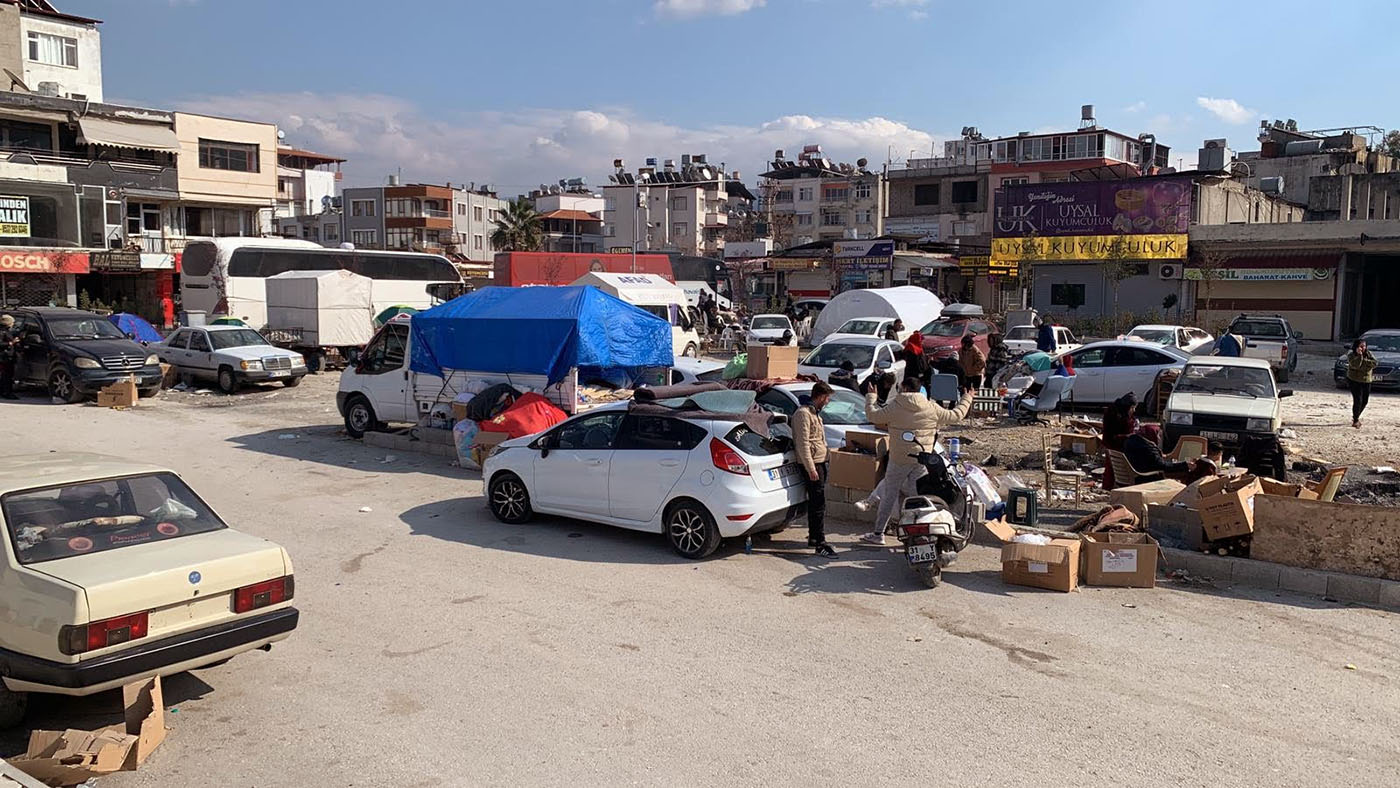
On the very night of that day, February 20, we were visiting the priest Abdullah Yumurta at St. Ilyas Church, which had survived the earthquake with minor damages and since then, had become a soup kitchen and an aid relief center. Electricity had returned as we chatted amicably with the priest while sipping tea and watched a batch of French fries being cooked in an enormous pan heated on an industrial stove (all of this seemed such luxury). My companion, human rights activist Caoimhe Butterly, asked Yumurta permission to visit the chapel, which goes back to an early Christian shrine in the 5th century CE but built sometime in the 1870s, and restored after different earthquakes rocked the region at the end of the 19th century. The church was more or less intact, and the exquisite wood panels near the altar untouched, although there clearly was debris from the first earthquakes behind the iconostasis.
Five minutes later, after we had just left the church, the February 20 earthquake began, and the already damaged front wall of the church yard collapsed right behind us. We drove nervously in the dark back to the tents of Yeni Park, with the fear of collapsing structures blocking the road, at the sight of confused people, escaping from buildings they shouldn’t have gone back into, hoping that some help would come from somewhere. The next day we learnt that the church had been finally destroyed; St. Ilyas is now part of the long list of destroyed churches, seeking funds to rebuild. The demolition order sent for St. Georgios Church in Altınözü, dating back to the 7th century, because it is not officially registered as a historical building, due to the complex politics of minorities in the region, is making observers nervous about the restoration of these churches. The demolition order was rescinded after a public outcry online.
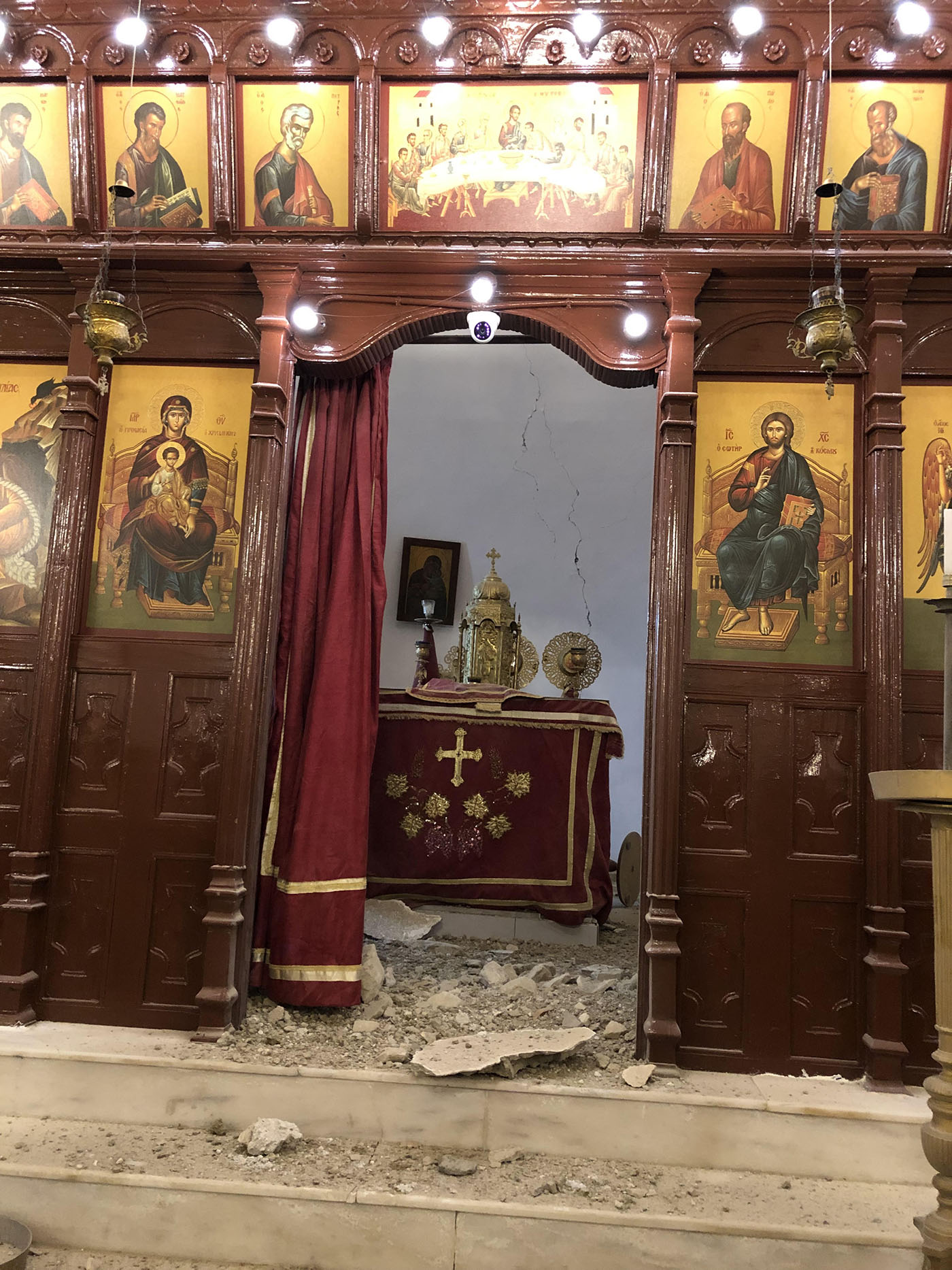
The life in tents reminds us that the feeling of security does not really come from the buildings we dwell in, but from the intricate web of human relationships around them.
As we drove away from the church, in silence, you could hear the frightening roar of the crumbling infrastructure around us, like a loud rattle, and we awoke in the morning to newly collapsed buildings. Although there’s a giant cluster of aid organizations and official bodies, as close as 30 minutes from Samandağ, no presence of the state was felt until a whole 12 hours later, when the police appeared in the town to inspect the damage. In hindsight, it is impossible to grasp what the people in this region felt during the morning of the February 6 earthquake, far longer and stronger than the one we experienced. Back at the tents, volunteers passed water and crackers, people were asked to congregate at the center of the square, and slowly half-normalcy returned as people drifted into sleep, and tremors continued through the night.
The life in tents of course reminds us that the feeling of security does not really come from the buildings we dwell in, but from the intricate web of human relationships around them. After the last earthquake, people at the square also tried to find each other, and felt their absence strongly; including the seven sisters who for days had been sleeping on chairs and covered only in blankets. The tent city in fact, resembles the history of Samandağ: Its foundations are never solid, its construction has never been completed, but it’s safe enough for temporary survival. The ancient St. Symeon, port of the Frankish principality of Antioch (in the 12th century CE), has changed hands many times, and was the site of different migrations and displacements, from Saint Simeon Stylites the Younger, to the Byzantine emperor Nikephoros II Phokas, to the Seljuk general Afshin ibn Bakji Bey.
In modern times, the area was known as Svediye, where six Armenian villages were located until most of them emigrated to Lebanon in 1939, after the region was annexed by Turkey. The city was built in patches, without following any kind of logic, mostly illegal constructions, stacked alongside one another in awkward shapeless blocks, without any kind of urban planning or zoning rules; some modern buildings near the center seem to be made of more durable materials, but many houses in the region were built using cheap materials such as sand and wood. The lack of attention to urban planning isn’t a mistake of omission but policy; within the same province, the scope of infrastructure projects varies greatly between districts that either support the state party, or are considered ethnically homogenous by the government, and those inhabited by more diverse populations.
The crisis is already unfolding: Landlords in the earthquake region demand rent be paid for houses that are no longer inhabitable; mass arrivals in many cities search for housing; and many property owners in Ankara and Istanbul refuse to lease apartments to “refugees” from the earthquake region.
A friend writes to us in a letter penned after the earthquake reminiscing of the town’s spontaneous plurality: “I grew up hearing stories of how Orthodox Greeks from Samandağ saved us Alawites and claimed us as members of their family during the French mandate so that we wouldn’t sent away, only to return to the same church to receive food, and give them whatever I had, for them to distribute. I realized how beautiful, pure, innocent we were in our little, poorly planned and constructed town, like the way tents and cars are placed now — by individuals and the solidarity of our people to survive.” Both the Alawites that now make up the majority of Samandağ’s population, as well as the Armenians in the past, suffered persecution under the Ottomans, but also under the Turkish republic, from the Massacre of Telal in Aleppo in 1517 to the military excursion of the Turkish army in Iskenderun in 1938 to expel all the Arab and Armenian population.
In my mind, these tents in Samandağ and elsewhere in Turkey now represent a dual metaphor for the newly displaced population: On the one hand, they stand for the resilience of life in the face of disaster, and the possibilities afforded by a moment of transformation where things are still in flux and radical changes are imaginable. Of course, on the other hand, it also stands for an architecture of the impermanence of life in a heavily authoritarian state that is likely to remain crippled for years to come, unable to handle the impending homelessness crisis that will affect millions of people. In fact, the crisis is already unfolding: Landlords in the earthquake region demand rent be paid for houses that are no longer inhabitable; mass arrivals in many cities search for housing; and many property owners in Ankara and Istanbul refuse to lease apartments to “refugees” from the earthquake region.
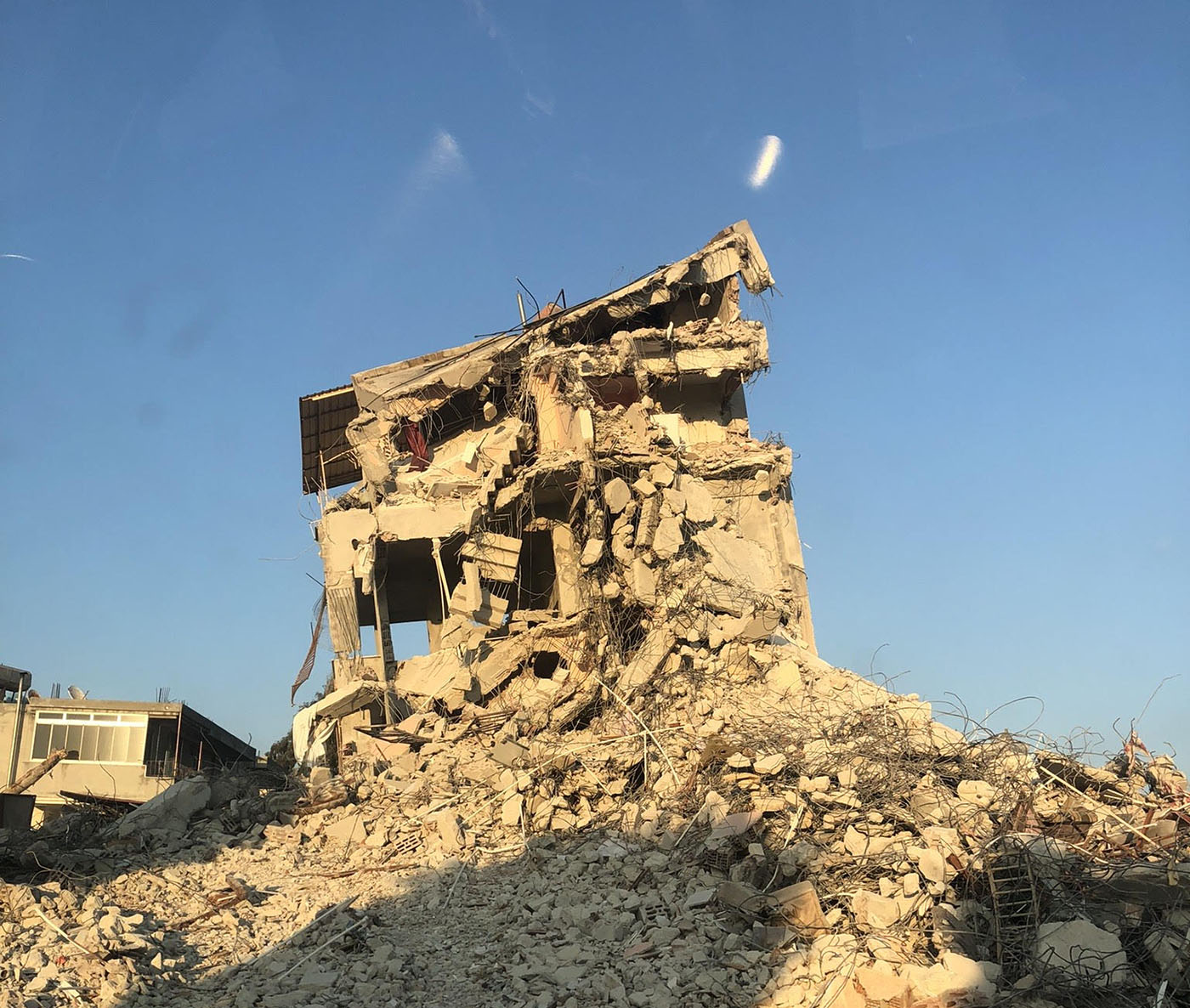
In fact, as a personal experience, our displacement is two-fold: First, we lost our house in the small town of Çevlik, a suburb of Samandağ, after it collapsed during the earthquake. Then, we’re also leaving Istanbul, possibly for Izmir, unable to cope with the completely overinflated rent prices, comparable to European capitals, and exhausted from a ruthless economic reality where the minimum wage is below the starvation line and current prices require three salaries just to cover rent. But we’re also relatively lucky considering the circumstances, and with a minimum amount of savings and help from friends, we will be able to have a fresh start, and perhaps think of leaving the country at some point. This cannot be said about the majority of people who are now in the tents or even waiting to receive a tent to begin with. What will happen when they’re forced into the tent cities?
In their book Lande: the Calais ‘Jungle’ and Beyond, that looks at a refugee camp in the north of France, archaeologists Dan Hicks and Sara Mallet talked about the “temporarization of temporality” that occurs within a refugee camp: People become displaced not only from places but also from the reach of institutions, from technology and from time itself, and they’re condemned to lead an existence in which everything is for them temporary and outside the cultural institutions of modernity: “The temporary becomes a space for politics, a time destroyed so quickly that it is perhaps even shorter than the evénément.”
This expulsion from time is a gesture not unlike that of closed migration borders and the role of colonial museums “safeguarding” artifacts. What we can see here is the larger framework of homelessness as a political question in the contemporary world, and the crucial juncture in which it becomes an ontological condition, rather than a situation to be overcome. Hicks and Mallet in fact warn us that these places of “self-organized refuge,” with impermanent architecture, are the prototype of a “new kind of world city,” in which nearly a third of the world’s population will be living in by 2030 — the precarious city.
I surely hope that the people at Yeni Park, in Samandağ, will be able to return home one day, but I’m not optimistic, and perhaps another patchy, completely irregular and just as unsafe Samandağ will be built on top of the old one that now has been destroyed. Another possibility is that people will become permanently displaced, and that they will simply get tired of waiting and go into exile, possibly forever. I think now about the story of Ezra Cenudioğlu, the last Jew of Antakya, after the death of his brother Saul and his wife Fortuna, leaders of the tiny local Jewish community, when he was donning tefillin in the streets of Antakya and telling Gilad Nir, “That’s it. I’m the last Jew in Antakya and I’m leaving. The community is finished. Nobody will ever come back here. We were here from 300 BCE till this day and it’s over. I’m the last to put on tefillin here.” Antioch was one of the centers of Hellenistic Judaism at the end of the Second Temple period. Jews had been living in the city ever since then, countering the idea of Western archaeologists that the city was completely ruined and abandoned after a number of earthquakes rocked it in the 6th century CE.
Ezra Cenudioğlu’s painful farewell to Antakya, together with the sight of the tents at Yeni Park, reminds me of the “Ma Tovu” Hebrew prayer that is said by Jews upon entering the synagogue or in certain festivals, expressing reverence and awe for the synagogue — something that Antakya no longer has, starting with a verse from the Book of Numbers, where Balaam is sent to curse the Israelites, and is instead overcome with awe at their dwelling in tents and their house of worship (and other lines from the Book of Psalms):
Ma tovu ohalekha Ya’akov, mishk’notekha Yisra’el.
Va’ani b’rov hasd’kha, avo veytekha,
Eshtahaveh el heikhal kodsh’kha b’yir’atekha.
Adonai, ahavti m’on beitecha um’kom mishkan k’vodekha.
(“How lovely are your tents, O Jacob, Your dwelling-places, O Israel!
As for me, through Your abundant grace,
I enter your house to worship with awe in Your sacred place.
O Lord, I love the House where you dwell, and the place where your glory tabernacles.”)
I wonder if the Ma Tovu will be said again in Antakya? The tents however are here to remain. The disorganized tent assembly of Yeni Park, with its pots and chairs and fireplaces, speaks not only of the pain people have endured in this indescribable tragedy — it’s as if they’ve gone through death and returned — but it also refers to the possibility of solidarity and generosity in times of crisis, which is in itself a way of envisioning a newer, different political reality. The fact of homelessness on this scale, dealing with millions of people, however, cannot be tackled through mere hope or good will; it will require major political decisions that will involve international actors and funds. Or are they really going to allow a dozen million people to become permanently displaced? I wish we didn’t have to think about the answer to this question. The reality that we have to confront is that what we’re dealing with here are not rational actors who have simply mismanaged a situation or performed poorly. What we’re staring at here is the gaze of evil. Plain and simple.



